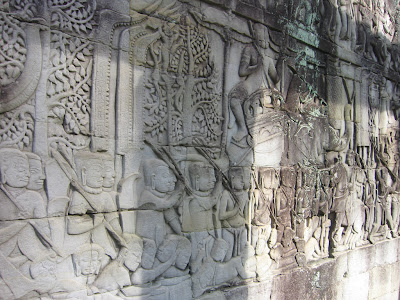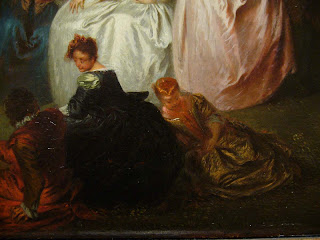Robert Buono in Cambodia
 Angkor Tom
Angkor TomThe more I look at photographs,
the more I see
who is behind the lens
instead of what is in front of it.
So -- it looks like this has become
yet another one of my internet projects:
to collect all the photo sets
of Angkor Wat and vicinity.
And this is a sculptor eye's
view,
emphasizing the projection,
and the dramatic.

I'm guessing that this is one of the views
that the architects were planning for ---
i.e. a grand processional

Wouldn't it be wonderful
to have giant portrait heads
of your own face
dominating a landscape?
How I envy that king !

And how can one be king,
if one does not have armies ?

As a former warrior in Southeast Asia himself,
Robert might have been expected
to find those martial scenes
that my other friends have missed.
 Another great processional.
Another great processional.What else was there to do in the temples of Khmer
back in their hey-day,
other than to have parades.
The mind boggles to contemplate a society
that had as many sculptors
as we have computer programmers.











































